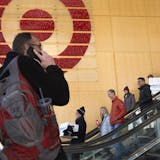Even a demography geek like me knows better than to claim that a few numbers explain all of the shifts to the left and right that have been seen lately in Minnesota politics. But I've come across some median age stats that I think say a lot.
Consider: Minnesota's statewide median age in 2015 was 37.9 years. That's close to the national average of 37.8. It ranks this state's population as younger than, say, Florida (41.8) and older than Texas (34.4).
But the statewide median masks big internal differences, wider than any state demographer Susan Brower says she's seen since median age data became available in 1980. In 21 of Minnesota's 87 counties — mostly in the western third of the state — the median age has surpassed 45 years. In four counties — Aitkin, Cook, Lake and Lake of the Woods — it's above 50.
But in St. Paul, it's 31.4. In Minneapolis, it's 31.9. It's younger still in St. Cloud and Mankato, both home to large state universities.
Those are politically consequential differences. To be sure, other big socioeconomic disparities between greater and metro Minnesotans pop out of U.S. census data, too. There are growing gaps to behold in income, educational attainment and racial population composition within this state.
But think about the likely political preferences of a population dominated by 20- and 30-somethings vs. one loaded with seniors, and you'll have a lot to ponder.
A former state demographer and pollster for this newspaper, Hazel Reinhardt, told me years ago that the events that occur when a voter is between the ages of 18 and 24 often determine his or her political bent for a lifetime. University of Minnesota political scientist Larry Jacobs said last week he subscribes to the same idea. He joined me in speculating about the political thinking of Minnesotans who witnessed the Vietnam War and Watergate during young adulthood vs. those who came of age during the Great Recession.
"Just think about the differences in formative experiences, community life experiences, expectations. It's almost literally black and white," Jacobs said.



